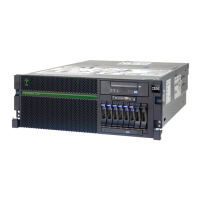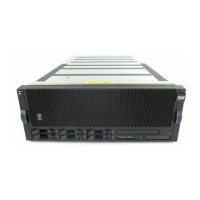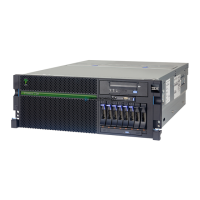Chapter 4. Continuous availability and manageability 159
The serviceability features delivered in this system provide a highly efficient service
environment by incorporating the following attributes:
Design for customer setup (CSU), customer installed features (CIF), and
customer-replaceable units (CRU)
Error detection and fault isolation (ED/FI)
First-failure data capture (FFDC)
Converged service approach across multiple IBM server platforms
By delivering on these goals, IBM Power Systems servers enable faster and more accurate
repair, and reduce the possibility of human error. Client control of the service environment
extends to firmware maintenance on all of the POWER processor-based systems. This
strategy contributes to higher systems availability with reduced maintenance costs.
This section provides an overview of the progressive steps of error detection, analysis,
reporting, notifying and repairing found in all POWER processor-based systems.
4.3.1 Detecting
The first and most crucial component of a solid serviceability strategy is the ability to
accurately and effectively detect errors when they occur. Although not all errors are a
guaranteed threat to system availability, those that go undetected can cause problems
because the system does not have the opportunity to evaluate and act if necessary. Power
processor-based systems employ IBM System z® server-inspired error detection
mechanisms that extend from processor cores and memory to power supplies and hard
drives.
Service processor
The service processor is a microprocessor that is powered separately from the main
instruction processing complex. The service processor provides capabilities for the following
items:
POWER Hypervisor (system firmware) and Hardware Management Console connection
surveillance
Several remote power control options
Reset and boot features
Environmental monitoring
The service processor monitors the servers built-in temperature sensors, sending instructions
to the system fans to increase rotational speed when the ambient temperature is above the
normal operating range. Using an architected operating system interface, the service
processor notifies the operating system of potential environmentally related problems so that
the system administrator can take appropriate corrective actions before a critical failure
threshold is reached.
The service processor can also post a warning and initiate an orderly system shutdown in the
following circumstances:
The operating temperature exceeds the critical level (for example, failure of air
conditioning or air circulation around the system).
The system fan speed is out of operational specification (for example, because of multiple
fan failures).
The server input voltages are out of operational specification.

